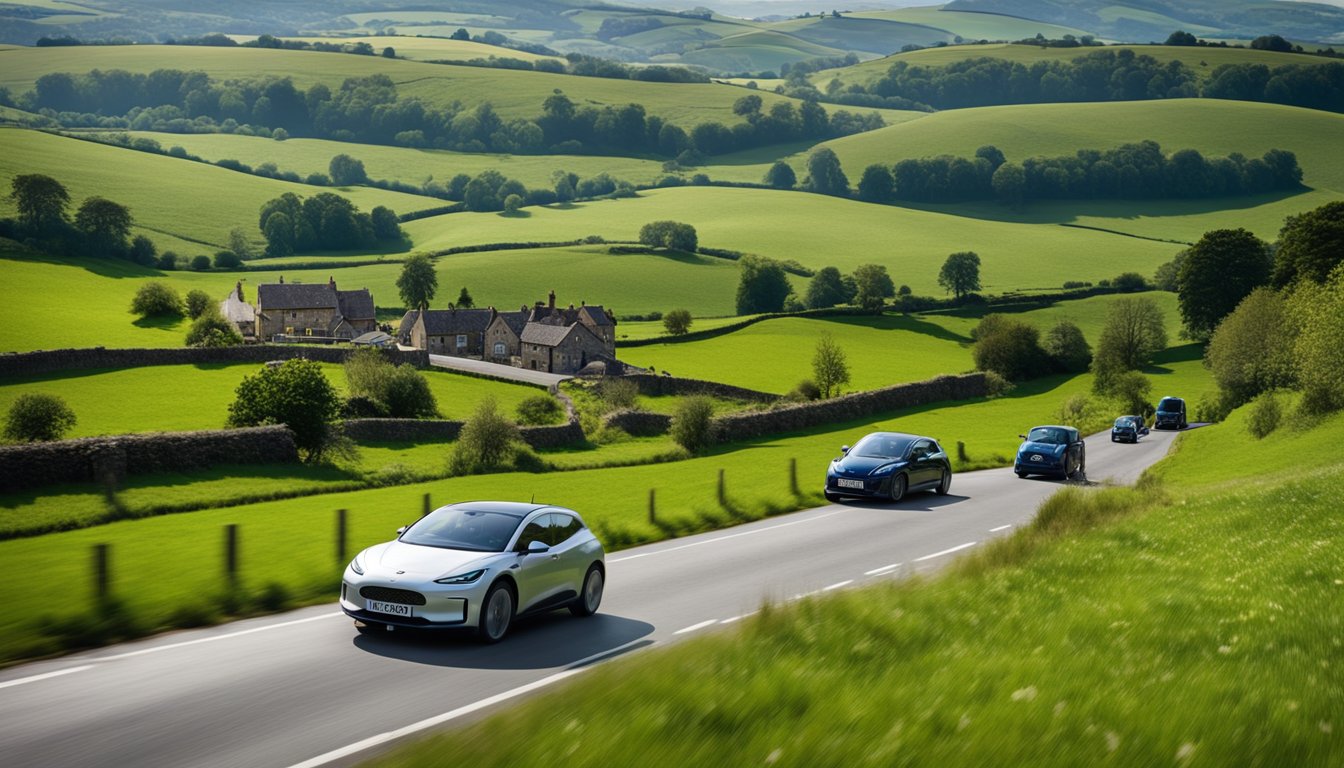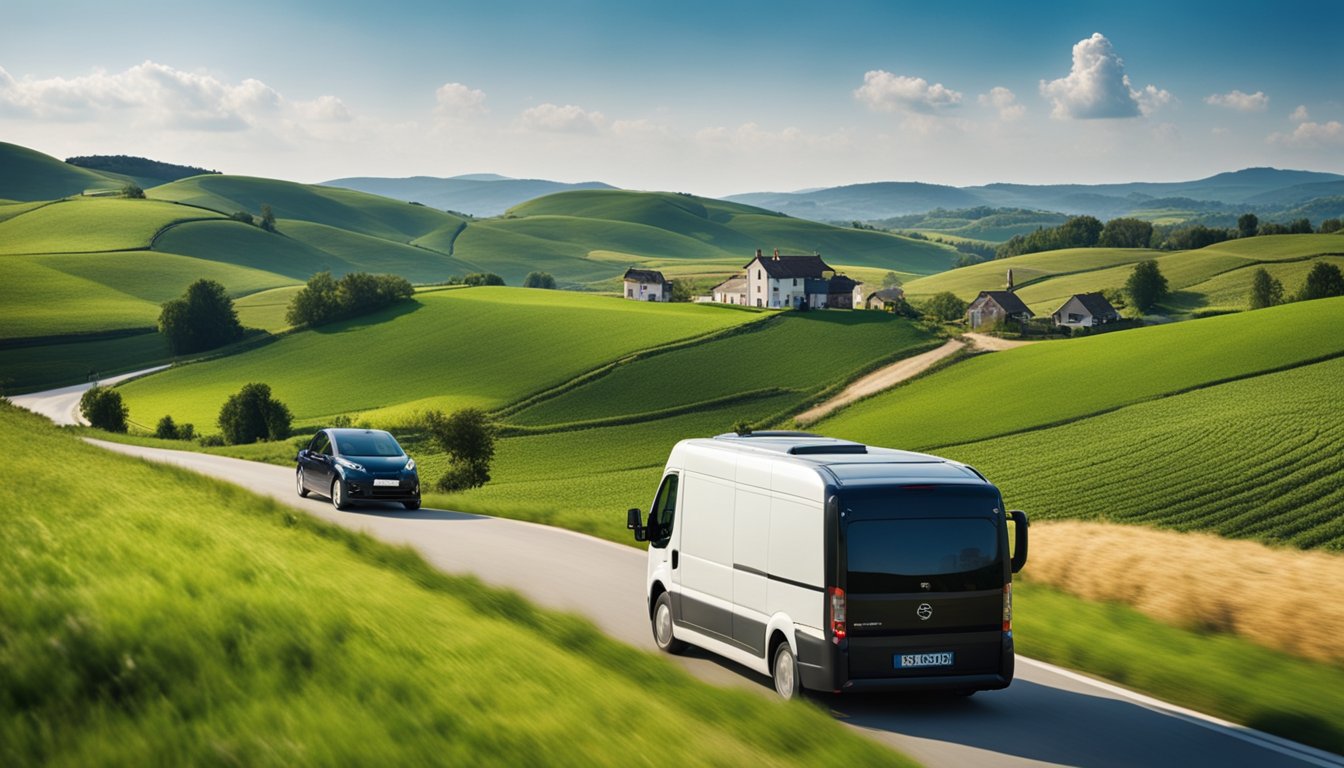Late updated: 01 Apr 2025 11:04
Written by: Oliver Bennett
Electric Vehicles For Rural UK Transport: Revolutionising Sustainable Mobility
Electric vehicles (EVs) are transforming the landscape of rural transportation in the UK. There's a growing recognition of the benefits these vehicles bring, from reducing emissions to boosting local economies. In rural areas, we face unique challenges like sparse infrastructure and longer travel distances, but solutions are emerging to address these issues.

Government investments and initiatives aim to improve rural EV infrastructure, making it easier for residents to transition to electric transport. While public charging facilities are still limited in some rural areas, recent developments indicate progress towards closing this gap.
Understanding the current state of EV adoption in rural regions and exploring strategies for infrastructure enhancement will be crucial. Engaging with these changes will help us navigate the evolving transport dynamics and improve accessibility for everyone.
Key Takeaways
- EVs offer environmental and economic benefits for rural UK transport.
- Infrastructure improvements are essential for wider EV adoption in rural areas.
- Government initiatives play a key role in enhancing EV accessibility.
Evaluating the Current State of Electric Vehicle Adoption in Rural Areas

Electric vehicle (EV) adoption in rural areas of the UK presents both significant challenges and opportunities. While the potential for reducing carbon emissions is high, rural infrastructure and government involvement play crucial roles in expanding EV use.
Challenges Facing Rural EV Deployment
Rural areas face specific challenges in adopting electric vehicles, primarily due to limited infrastructure. The sparse distribution of charging stations makes long trips daunting for EV owners. Unlike urban counterparts, rural dwellers often travel longer distances with fewer public charging options. The adoption is hindered by range anxiety—the fear of a vehicle running out of charge with no charging point nearby.
Infrastructure expansion in these areas requires financial resources and strategic planning. Smaller populations spread over larger areas make building charging networks less profitable for companies. Additionally, rugged terrains and unreliable internet connectivity can complicate the deployment of smart technologies essential for EV efficiency. Addressing these issues is critical for widespread EV adoption in rural settings.
The Role of the Government and the Department for Transport
The UK government and the Department for Transport are pivotal in shaping rural electric vehicle adoption. Through incentives and funding, they aim to boost EV infrastructure in less populated areas. Policies promoting EV use include grants for electric vehicle purchases and funding for charging station installation. These measures are crucial for making EVs accessible to rural residents.
The government's 'Road to Zero' strategy seeks to expand EV infrastructure nationwide, including in rural locales. Additionally, geospatial tools like LOCATE EV are utilised to find optimal sites for new chargers, ensuring equitable access. Collaborating with local governments is essential in tailoring solutions that meet the unique needs of rural communities.
Strategies for Enhancing Rural Electric Vehicle Infrastructure

To expand electric vehicle (EV) usage in rural UK areas, we must address funding mechanisms, embrace innovative charging solutions, and effectively integrate EVs into the local electricity grid. These steps are essential to overcoming the challenges faced by rural communities in adopting EV technology.
Funding and Incentives for Local EV Infrastructure
Securing adequate funding is crucial for the development of local EV infrastructure in rural areas. Government grants and incentives can be targeted towards local councils and businesses to install public charge points. By offering tax breaks or subsidies, we can encourage private sector investment in charging stations.
Financial incentives may also be provided to residents who choose EVs. These incentives can balance the initial costs of purchasing an EV and enhance its appeal, even in less accessible areas.
Local partnerships can boost infrastructure development further. By collaborating with local businesses, councils, and community groups, we can create a shared investment strategy. This collaborative approach can ensure everyone benefits from a sustainable and efficient charging network.
Innovations in Charging Infrastructure
Innovative solutions are essential for developing efficient and accessible charging infrastructure in rural areas. Rapid charging points are vital, allowing users to quickly charge their vehicles during short stops. These chargers can be strategically placed along frequently used rural routes to maximise convenience.
We should explore off-grid solutions. Solar-powered charging stations can provide an effective alternative in areas with limited grid connectivity. Battery storage systems can be paired with solar panels to store energy, ensuring availability even during periods of low sunlight.
Flexible charging solutions, like mobile charging units, can adapt to fluctuating demands. These units can be deployed where needed, offering a versatile approach to support remote areas where traditional infrastructure may take longer to establish.
Integrating EVs into the Existing Electricity Grid
The integration of EVs into the existing electricity grid presents unique challenges that require careful planning. Smart grid technology is key to ensuring a seamless integration. By using smart meters and dynamic pricing, we can balance the demand on the grid and optimise energy use.
Encouraging the use of vehicle-to-grid (V2G) technology can allow EV owners to return excess energy back to the grid. This not only supports grid stability but also offers financial incentives to users.
Enhanced grid infrastructure is essential. Strengthening rural electricity networks will support increased demand and prevent outages. Investment in higher capacity transformers and reinforced distribution lines is necessary to accommodate the growing number of EVs.
Frequently Asked Questions

Exploring electric vehicles (EVs) for rural UK transport involves understanding vehicle suitability, charging infrastructure, affordability, running costs, and other practical considerations. This section addresses common queries for those navigating the transition to electric transport in rural areas.
What are the best electric vehicles suited for rural transport in the UK?
Rural transport demands vehicles with reliable range and sufficient ground clearance for uneven roads. Models like the Nissan Leaf and Hyundai Kona Electric are popular due to their efficient design and robust handling.
Can electric cars be efficiently used in rural areas where charging stations may be scarce?
Driving an electric vehicle in rural areas with limited charging stations requires strategic planning. Portable chargers and installing home charging units can mitigate the inconvenience, ensuring continued mobility.
What are the most affordable electric vehicle options available to consumers in the UK?
For budget-conscious consumers, models such as the MG ZS EV and Renault Zoe offer affordable entry points into electric vehicle ownership while providing good value through efficiency and low maintenance costs.
How do electric vehicle running costs compare to petrol or diesel for rural UK residents?
Electric vehicles tend to incur lower running costs compared to petrol or diesel counterparts. Charging infrastructure may be an initial barrier in rural areas, but overall energy costs remain lower, providing long-term savings.
Which electric vehicles are available in the UK that do not require a driving licence to operate?
Some compact electric vehicles or quadricycles, like the Renault Twizy, offer alternative transportation modes in rural areas and do not require a full driving licence under specific conditions.
Is the investment in an electric vehicle cost-effective for rural UK transport considering the current infrastructure?
Assessing cost-effectiveness depends on individual circumstances, including travel distances and charging access. While initial investments might be significant, the declining cost of electricity and supportive government incentives can enhance long-term benefits.
